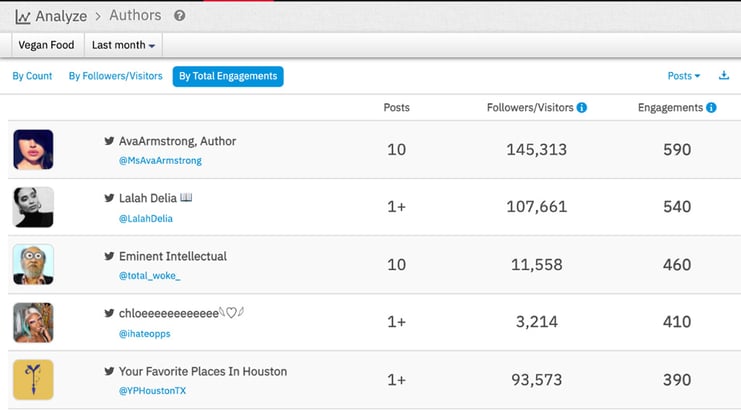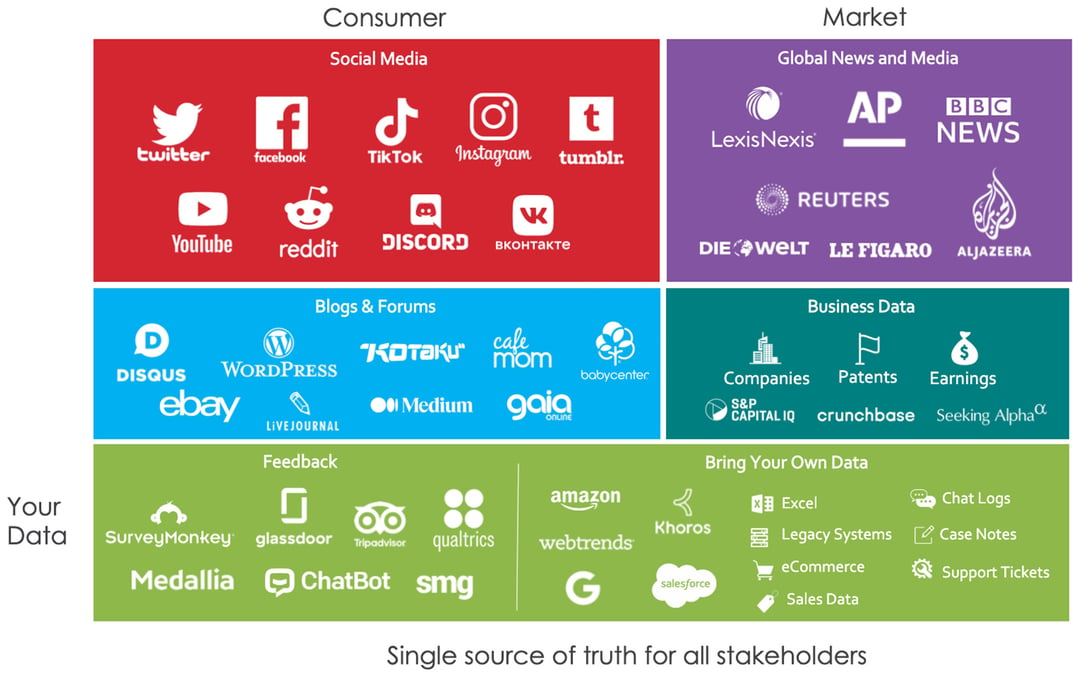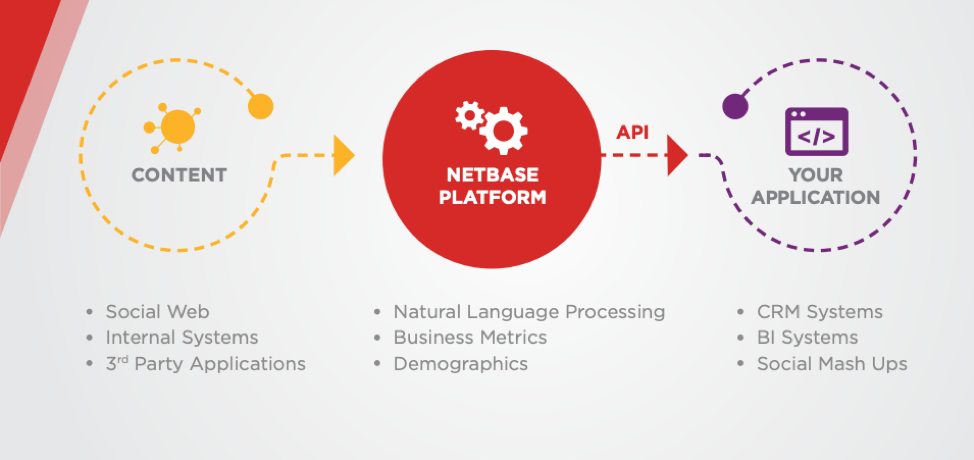Evamarie J
.png?width=1920&name=2023.Q4%20-%20Blog%20Banners%20-%20Legacy%20Blogs%20(5).png)
It’s crucial to be aware of your audience’s needs and offer something intelligent and pertinent if you hope to capture and maintain their attention. As marketers, you have a hidden ace up your sleeve to do precisely this—and it’s called consumer research. This capability is essential to avoid mundane marketing and motivate your brand to generate compelling campaigns that consistently make an impact.
Let’s start with the basics, by covering:
Conducting consumer research should be a continuous process. Even after launching a successful marketing campaign, it’s important to continue with research efforts. Consumer preferences constantly evolve, so it’s crucial to keep track of your audience’s changing preferences and tailor your messaging accordingly.
Moving forward, consider the following points:
Before delving into how consumer research can aid in developing more impactful messaging, let’s first examine a few fundamental concepts.
Conducting research is an essential activity for businesses that want to obtain a competitive advantage in their industry. Consumer research insights can provide valuable information on consumer behavior, preferences, and purchasing decisions. By conducting consumer research, businesses can tailor their products, services, and marketing strategies to meet their target audience’s needs and preferences.
Market research can help identify potential opportunities and threats, enabling businesses to stay ahead of the curve and adapt to changing trends. Investing in consumer research can provide valuable insights that drive business success.
Conducting customer research is essential to understand their needs and wants better. Various techniques such as surveys, interviews, and focus groups are used to gain insights into customer inclinations, motivations, and habits. Customer research can help identify potential new audiences, tailor messaging to attract them to a brand, and inform business decisions and marketing strategies. However, traditional qualitative consumer research methods have limitations, including small sample sizes and limited speed to insight.
Social listening has emerged as a new and effective consumer research method. With the help of advanced artificial intelligence (AI) technologies, social listening tools can analyze vast amounts of internal and external data in real time without any issues with sample size or speed to insight. As a result, more and more brands are adopting social listening to gain valuable consumer insights. Beyond protecting brand reputation, social listening also revolutionizes marketers’ understanding of their audience.
The ultimate objective of the consumer research process is to gain a comprehensive understanding of your target audience. The aim is to identify what matters most to them and what factors drive their purchasing decisions. By doing so, you can provide more customized and meaningful brand experiences that enhance customer satisfaction.
By utilizing social listening in your consumer research process, you can:
Consumer insights from target market analysis and secondary data can guide effective marketing campaigns. Understanding custom audience interests and motivations can ensure relevant and effective content. Monitoring the social climate around the target market can reveal emerging issues and changing needs.
Primary consumer research can provide in-depth insights into audience behavior, preferences, and influential figures. Social listening can uncover channels and domains frequented by the audience. Collecting consumer research data can help tailor marketing strategies.

Top authors speaking on vegan food products. 10/19/21-11/19/21
Conduct consumer research with social listening to uncover audience interests, preferences, and behavior. Identify dissatisfied customers of competitors and key opinion leaders to create resonant messaging. Analyze consumer intelligence to tailor marketing messages to specific segments and optimize ad timing and placement. Understanding customer psychology through consumer intelligence can help create more effective and persuasive campaigns for better marketing performance and increased sales.
It is important to utilize qualitative and quantitative research methods to conduct effective consumer research and thoroughly understand consumer behavior. Quantitative research uses data-driven analysis, while qualitative research involves gathering observational data from interviews, surveys, focus groups, and social media content.
To get the most comprehensive consumer insights, it is best to combine both qualitative and quantitative research methods into a single, accessible dashboard that is easy to use for stakeholders and analysts alike. This hybrid approach can provide a more holistic view of consumer behavior.

In summary, to conduct successful consumer research, it is crucial to understand and utilize qualitative and quantitative research methods and integrate them into a single, accessible dashboard for a more comprehensive understanding of consumer behavior.

Consumer research using qualitative methods is crucial for understanding consumer behavior, preferences, and motivations. Analyzing this data can provide valuable insights into consumer psychology and inform marketing, product design, and customer service decisions.
Thorough consumer research can give businesses a competitive advantage and improve their bottom line. A consumer research model involves:
Consumer research models are structured methodologies to acquire consumer behavior, attitudes and preferences data. Such models entail a series of steps:
The consumer research process involves:
Consumer research is crucial for businesses launching new products or services as it provides insights into the preferences, needs, and behavior of the target audience, enabling businesses to make informed decisions about marketing, pricing, and customer service. By understanding market readiness, identifying target consumers, and providing valuable feedback, companies can refine strategies, attract consumers and increase profits.
Effective consumer research requires asking the right questions. Here are some key consumer research questions to consider:
Asking these questions correctly can help you better understand your target market and provide consumer insights to improve your marketing, pricing, and overall customer experience at every stage of the buying journey.
Successful consumer research requires challenging assumptions and gathering detailed information about consumer needs, behaviors, and attitudes.
To assist in this endeavor, businesses can follow tips such as attracting a more extensive customer base, determining optimal product pricing, crafting compelling marketing messages, and enhancing their customer service approach.
Subgroup analysis is used in secondary data analysis to understand how variables affect outcomes in specific demographic segments — this can help businesses gain insights into consumer behavior and inform targeted marketing strategies. Subgroup analysis can combine with external data to achieve a more comprehensive understanding of the market. Subgroup analysis is an effective tool for developing targeted marketing campaigns.
Analyzing qualitative data through subgroup analysis can be a valuable tool in understanding consumer feedback, but it’s essential to be cautious about sample size and the number of comparisons made to avoid errors in analysis. Overuse of multiple tests on the same data can lead to false positives, and machine learning algorithms may produce repetitive results that could be more useful. Considering existing customer feedback can help improve brand positioning and marketing strategy.
Educational evaluation is a necessary process that assesses a student’s academic abilities and identifies potential barriers to learning. It can also evaluate the effectiveness of program interventions. The evaluation is done by specialized professionals who can help teachers identify and solve problems affecting their students, clarify schooling goals, and enhance the teaching and learning process.
Consumer research is gathering and analyzing data about target consumers to understand better their preferences, attitudes, motivations, and behaviors related to a product or service. This information is then used to develop effective marketing strategies, improve products, and meet the needs and wants of consumers.
The process of consumer research comprises numerous steps, which include:
To conduct effective consumer research, collect primary and secondary data, including customer data, to build brand equity and loyalty. Quickly uploading both structured and unstructured data is vital for real-time reporting. Analysis of both qualitative and quantitative data is necessary to extract meaningful insights. Aspect-based sentiment analysis is a reliable tool for analyzing customer sentiment and preferences.
Check out our two-part series, Sentiment Analysis Explained by a Data Scientist, for an in-depth discussion on the importance of aspect-based sentiment analysis.
Marketers often need more time, so traditional research methods are no longer effective in the fast-paced advertising industry. However, abandoning consumer research and relying solely on intuition is not a viable solution.
Social listening is an invaluable tool for marketers to overcome this challenge and is the first benefit we will discuss. Quid® can help businesses with their social listening strategy by gathering and analyzing data from various social media platforms, including brand mentions, competitor mentions, relevant topics, Etc. With real-time insights, businesses can stay ahead of their competitors and make informed decisions to improve their social media presence.
For those who are not acquainted with social listening tools, integrating them into your marketing approach, particularly for consumer research, may involve a learning process. However, applying a custom audience analysis as a theme to any topic under the sun can provide valuable insights into consumer psychology and buying behavior.
For example, if you’re a vegan food producer looking to market a new pancake mix, analyzing pancakes and filtering it through your audience theme can help you understand your audience’s sentiments towards vegan pancakes, ultimately aiding in developing an effective campaign.
215 cal vegan pancakes that don’t taste like anorexia loving life rn pic.twitter.com/MHMcKGyxrT
— cherry (@vaniIIabunny) October 16, 2021
With social listening tools, obtaining real-time information on sentiment, impressions, popular posts, domains, authors, influencers, geodata, and more is now possible in just a matter of moments. This also includes relevant talking points, emotions, and hashtags related to your audience and your upcoming pancake campaign. Having all this valuable information at your fingertips in minutes is a game-changer for marketers.
Incorporating consumer research into your marketing strategy can provide invaluable insights into consumer behavior. By understanding how customers perceive your products, competitors, and their needs, you can view your brand through their lens and adjust your messaging accordingly. This allows you to effectively walk a mile in their shoes and create a successful brand that resonates with your target audience.
Implementing ongoing consumer research can significantly improve a brand’s connection with its audience and brand positioning in the market. To thoroughly understand your target audience, it’s crucial to present messaging that aligns with their interests and needs.
Effective marketing strategies involve analyzing your audience’s unique properties to provide them with educational and entertaining content instead of constantly promoting your brand. Prioritizing the needs of your audience can build trust and a positive reputation, ultimately leading to a vibrant consumer base.
Customer analysis and consumer research lead to consumer insights and increased customer satisfaction. By understanding your audience, you can avoid messaging missteps and highlight topics they love.
You can also be proactive in choosing initiatives to tie your brand to rather than jumping on every bandwagon. This frees you from messaging around the news cycle and ensures you remain relevant and data-driven. With a well-prepared and knowledgeable approach, you’re much less likely to come off tone-deaf to your audience and more likely to build a robust and engaged consumer base.
Consumer research is key to making the most of your marketing budget. By accurately defining your existing customers and monitoring their behavior over time, you can ensure that your targeting is precise and efficient. Don’t waste your ad spend on people who aren’t interested in your product. Use consumer research to meet your audience’s needs and interests.
Consumer research is an ongoing commitment that requires a clear objective and flexibility to adapt to unexpected insights. Conducting consumer research as a checkbox exercise and hastily crafting messaging is insufficient. Understanding the nuances that shape perception and influence consumer behavior demands dedication and expertise to unearth the underlying motivations behind consumer actions and language.
Market and consumer research insights are valuable in developing an effective marketing strategy that aligns with your business objectives. However, more than gathering insights and hoping for the best is required. To achieve the best results, you must analyze the data and identify the most promising opportunities for messaging and targeting.
Careful consideration and skill are required to make sense of the vast amounts of information collected through market and consumer research. After pinpointing the most pertinent observations, you can leverage them to develop a messaging plan that connects with your intended audience and boosts customer contentment.
Sony OLED Televisions
To gain insights into consumer perspectives on Sony OLED televisions across key metrics, a leading consulting firm turned to Quid®. The firm analyzed product reviews from Amazon and Best Buy and identified five main categories based on the online consumer reviews:
Upon deeper analysis, it was discovered that the Smart TV conversation had the highest percentage of negative comments, primarily due to Android TV features. In contrast, the Installation discussion had no 1- and 2-star reviews. We filtered the analysis to include reviews for two specific Sony models – the A1E and A8F series to gain more insights. This revealed a difference in consumer preferences between the two models, which can be leveraged in content marketing strategies.
Further analysis of specific pain points between the two Sony TV models reveals that the A1E received negative feedback on 16 particular issues, while the A8F had only three areas of concern. These insights present numerous messaging and content marketing opportunities, highlighting key areas such as picture quality and installation/setup that will likely generate positive feedback.
Additionally, the analysis shows that messaging around price is unnecessary as it is the smallest of the conversations and still has high sentiment. Moreover, negative reviews centered on Android TV functionality, which could be addressed in a future software patch, presenting an opportunity to tackle the issue as soon as the bugs are resolved.
Quid® provides an effective solution for businesses conducting consumer research and gaining valuable insights into their target audience’s needs and behaviors. Various research techniques, such as surveys, interviews, and text analysis, can help brands become more customer-centric, improve products and services, and increase revenue.
The platform’s ability to filter and analyze data from various sources provides a comprehensive understanding of customer behavior and preferences.